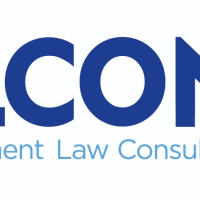17.09.2009
Profile:
• Eighteen years experience of advising boards, specialising in sales and management consultancy(including board level facilitation), coaching, and headhunting.
• Strong experience in sales and…
Common mistakes in sales training
How many times has your company run sales training with no visible effect on the business after the training? There are many reasons that sales training fails, here are some of the most common:
No Clear Objectives
Many times we have been told by sales managers that there sales team can\'t close, so they obviously need training based on closing skills. When we actually analyse the issues, we normally find that the problem lies much earlier in the sales cycle. Often the issue concerns poor questioning and qualification skills which leads to the sales person trying to close the customer inappropriately, with a product/service that doesn\'t meet their real needs.
Another classic misunderstanding often occurs when a new product/service has been launched, but the sales team aren\'t selling it. Obviously, they need some product training - get product marketing to do a day\'s powerpoint detailing all the features and benefits of the new product. Unfortunately, the newly launched product may need to be sold at a higher level in the customer\'s organization, and the sales force have no experience of how to engage with customers at this level.
There are many examples of misaligned training. It is important to put thought into what you want to achieve and what analyse what the gap between where you are now and where you need to be is. This is often termed a Training Needs Analysis (TNA), often accompanied by a sales force assessment.
The other situation that occurs is when the training is seen as a catch-all day, where all the things you need the sales team to know are crammed into the day. No focus, no clear objectives and lots of brief sessions with no theme or linkage.
It\'s Not Sales Training
Sales training tends to be a catch-all phrase for any communication to the sales team. We have witnessed many times a technical trainer running through a very detailed PowerPoint presentation, originally developed to train the technical department. This is not sales training, it\'s not an effective way to train the sales force,but it is cheap based on existing training materials.
But if we stop and think for a minute, do we actually want our sales force to be as technical as our systems consultant, do we want them to engage our customers at a detailed technical level. Hopefully the answer is no, we actually want the sale team to be able to engage our customers at the level of their business needs and drivers. For them to be able to get their customers to commit themselves to action because of the size of the business problem and bridge between that problem and your solution. So the sales training required is around business drivers, case studies and role plays to re-enforce the skills.
Other examples include getting 200 sales people in the room and getting people to talk at them for a day without any interaction. Again this is cheap, but of almost no value. Good sales people are used to being active and challenged and doing things. Good sales training is built to engage the sales team, create lots of interaction and move at a pace that keeps them moving.
What Changes?
Your sales people have just attended a 3-day sales training course. It\'s theme was account strategy and opportunity management, how to develop a more long-term relationship with your customers. The sales people enjoyed the course, it was thought provoking, and gave them some tools to help change their behaviour.
They get back to their desks and their sales manager says, because of the training you are $60K down this week, get on the phone and get some business, even if you have to drag it from next week. So they phone their customers and try and force them to pull orders they had promised for next Tuesday into this Friday. We know today\'s business is crucial, but think of the affect this management style has on the sales people and the customers. What has changed, when will the new skills and behaviours discussed on the course ever be implemented.
This example is not uncommon, and raises issues around management buy-in (see No Executive Sponsorship) and whether thought has been given to how the required changes will actually happen.
Many people confuse objectives of a training program with the outcomes of the program. We use a simple definition: objectives are what the training course was developed to achieve; outcomes are what happen if the sales people actually take actions from the course and use the new skills or change their behaviour. If there is no mechanism to get from objectives to outcomes nothing will change.
No Executive Sponsorship
This section fits together with What Changes?. Real change in the sales force can only happen if there is a top-down desire throughout the management team to make change happen. In our view, this is the most common reason for sales training failing, no management buy-in to change their behaviour and how they work with their sales people.
There are really two situations where the whole organization gets fully behind the change program. Firstly, and most commonly, when the company is in real, and obvious, trouble. There is no doubt that change must take place. This can be competitive threat, a fundamental change in the market, an economic downturn, etc. Secondly, when the company is doing so well that it\'s velocity of growth is causing the business to stall. Not so common in the IT business today (maybe more common prior to the dot.com crash), but still a possibility in new, niche technologies.
Other examples include, when the sales team changing their behaviour also affects other departments who haven\'t been engaged and are not prepared to change their way of working. For example, sales are trained to drive more customers to order over the web, but the operations and order entry departments have not visibility of these changes, and no processes or systems to cope.
An Isolated Course
Sales training initiatives often start with grand ideals but crash and burn after the first course. We need to move the sales force from selling products in a transactional environment to selling managed services into the heart of our customers\' businesses. The training program will consist of three phases:
* Phase I - will be a basic sales skills refresher to get everyone to a common level of understanding.
* Phase II - will look at the market and business drivers in our customers\' businesses creating the need for managed services.
* Phase III - will focus on our managed service deployment, how we meet a customer\'s needs, the competitive landscape, and role plays to re-enforce the learning.
How many phases of the program do you think get rolled out? Well normally it ends up being just phase I, and the sales team are yet again put through Sales 101, with the promise of more advanced courses to come. This is one of the main gripes of sales with regard to training, we just keep doing the basics time after time.
To change this situation, there is a need for long-term executive sponsorship (see No Executive Sponsorship) and a business that is prepared to continue a training program even if the figures are bad. Now in reality, with quarterly reporting and OPEX freezes, maybe a business can never make such a commitment. We consider the implications of this in The Way Forward (see the link below).
No Sales Engagement
A technique that we have used on some training courses, is to ask each participant to write anonymously on a post-it the following information
* How well do you understand the need for this course.
* How positive are you about attending the course
* For each point, score 1-10, 1 being no understanding - not positive and 10 being full understanding - totally positive.
* For example - understanding 4, positive 3
We then create a scatter diagram on a flip chart, divide the diagram into 4 quadrants, and look at the result. What percentage of results do you think appear in the top right quadrant (good understanding and positive)? If you said less than 20% for most course, sadly you would be right.
This comes down to communication. Have your sales people been sent a crisp, precise email summarizing the need for change, why they are on the course, how it will benefit them and the business, any pre-work they need to do, and what the expected outcomes (changes) will be. If this comes from the executive sponsor, so much the better.
Too many training courses are run with sales people attending who have little idea why they are there, and even less interest in being there.
For more information about sales training please visit http://www.sales-training-consultants.co.uk
Property
Why Do We Need Emergency Lighting?
Emergency lighting plays a critical role in ensuring life safety first in any…
Employment & HR
Labour’s new Employment Rights Bill: challenges employers...
The introduction of Labour’s Employment Rights Bill on 10th October 2024 has created a significant shift in how…
More Articles
Business Management
The Value of a Sustainability Strategy in the Tender Process
In today’s competitive landscape, businesses face increasing pressure to demonstrate their commitment to…
Business Management
Unlocking the Power of Raw Financial Data
At Master of Coin Consulting, we offer independent strategic finance advice to help micro to medium-sized businesses…
Would you like to promote an article ?
Post articles and opinions on Professionals UK
to attract new clients and referrals. Feature in newsletters.
Join for free today and upload your articles for new contacts to read and enquire further.







